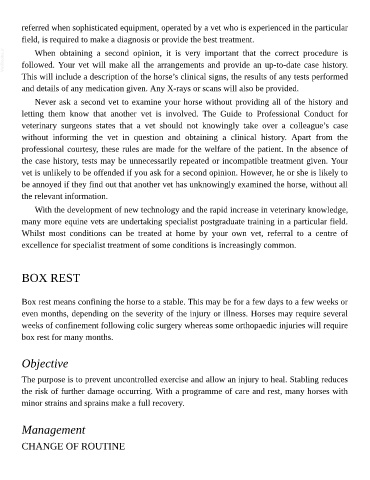Page 1112 - The Veterinary Care of the Horse
P. 1112
referred when sophisticated equipment, operated by a vet who is experienced in the particular
field, is required to make a diagnosis or provide the best treatment.
VetBooks.ir followed. Your vet will make all the arrangements and provide an up-to-date case history.
When obtaining a second opinion, it is very important that the correct procedure is
This will include a description of the horse’s clinical signs, the results of any tests performed
and details of any medication given. Any X-rays or scans will also be provided.
Never ask a second vet to examine your horse without providing all of the history and
letting them know that another vet is involved. The Guide to Professional Conduct for
veterinary surgeons states that a vet should not knowingly take over a colleague’s case
without informing the vet in question and obtaining a clinical history. Apart from the
professional courtesy, these rules are made for the welfare of the patient. In the absence of
the case history, tests may be unnecessarily repeated or incompatible treatment given. Your
vet is unlikely to be offended if you ask for a second opinion. However, he or she is likely to
be annoyed if they find out that another vet has unknowingly examined the horse, without all
the relevant information.
With the development of new technology and the rapid increase in veterinary knowledge,
many more equine vets are undertaking specialist postgraduate training in a particular field.
Whilst most conditions can be treated at home by your own vet, referral to a centre of
excellence for specialist treatment of some conditions is increasingly common.
BOX REST
Box rest means confining the horse to a stable. This may be for a few days to a few weeks or
even months, depending on the severity of the injury or illness. Horses may require several
weeks of confinement following colic surgery whereas some orthopaedic injuries will require
box rest for many months.
Objective
The purpose is to prevent uncontrolled exercise and allow an injury to heal. Stabling reduces
the risk of further damage occurring. With a programme of care and rest, many horses with
minor strains and sprains make a full recovery.
Management
CHANGE OF ROUTINE

